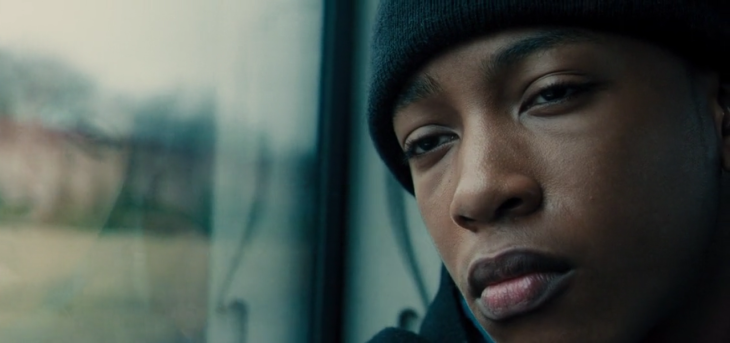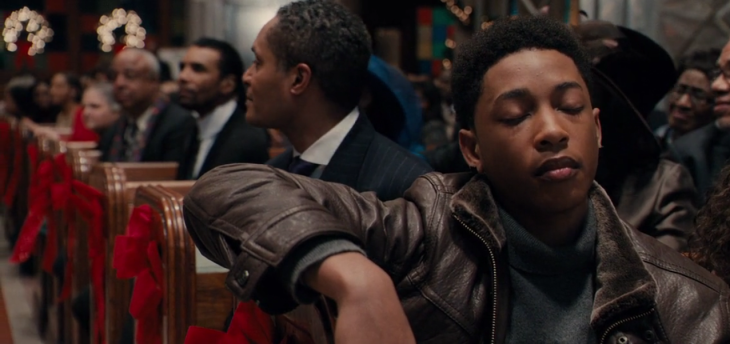
Welcome to The Twelve Ways of Christmas, where we unpack weird and overlooked holiday films. And let’s face it, the blog roll could use the attention.
With little rhyme or reason, check in from now until The Day That Must Not Be Named for a new entry.
“What happens to a dream deferred?” That’s the question that begins Langston Hughes’ famous poem about freedom and revolution. Hughes’ words form a call to action, a sneakily explosive one, too, and it’s a sentiment that’s gently echoed throughout Black Nativity, Kasi Lemmons’s 2013 adaptation of Hughes’ stage musical of the same name. In Lemmons’ version, characters bluntly quote from Hughes while others literally share his namesake, coalescing with music, history and tradition for a Christmas film that’s uniquely spiritual within the commercial blockbuster paradigm.
Teenager Langston (Jacob Latimore), named for the famous playwright and poet, is sent away from Baltimore to spend Christmas with his grandparents in Harlem. His mother Naima (Jennifer Hudson) is behind on rent and out of fear of living on the streets entrusts his temporary care to her estranged parents (Forest Whitaker and Angela Bassett) and their relatively cushy life as the heads of a Baptist church in New York City. At first reluctant to warm up to his grandparents and their faith-centered life, Langston learns much about black America’s struggles and resounding perseverance from Whitaker’s solemn Reverend Cobb and Tyrese Gibson’s troubled pawn shop worker, both of whom become strong male figures for Langston while occuping diametrically opposed ends of the class spectrum.

Black Nativity is lean and economical storytelling, impressive considering given the loads of history and culture it draws from, and its “slice of life” can draw on preachers and pregnant young mothers alike without ghettoizing or Cosby-coating social realities. But it’s also a musical and a spiritual one at that. Laura Karpman and Raphael Saadiq’s soulful compositions mix gospel music with hip-hop and spoken word (cameos from Nas and Mary J. Blige help in this department). Black Nativity begins with Langston singing about life on the streets of Baltmore before news of his stay in New York segues into an anxious solo by Jennifer Hudson. Lemmons’s direction practically floats from scene-to-scene, uniting and interlocking each moment. The final sequence, a giant choral number, gathers its characters in a warm embrace and reaches across the church aisles for guidance and healing.
If there’s any Christmas message to Black Nativity, it’s only a tangential one brought on in its dreamy recreation of the nativity story. When Langston nods off in the middle of his grandfather’s Christmas Eve sermon, his dreams swirl into the birth of Jesus albeit with his loved ones taking the places of their Biblical counterparts. Despite his devout grandparents, Langston finds his faith on his own. This is a story about resilience and shedding pride for the betterment of others and Black Nativity ditches the tinsel and trappings for a soulful message that colors drab skylines and depressed characters with joy and hope — and without ever having to preach.
Way #1: Batman Returns

9 Comments